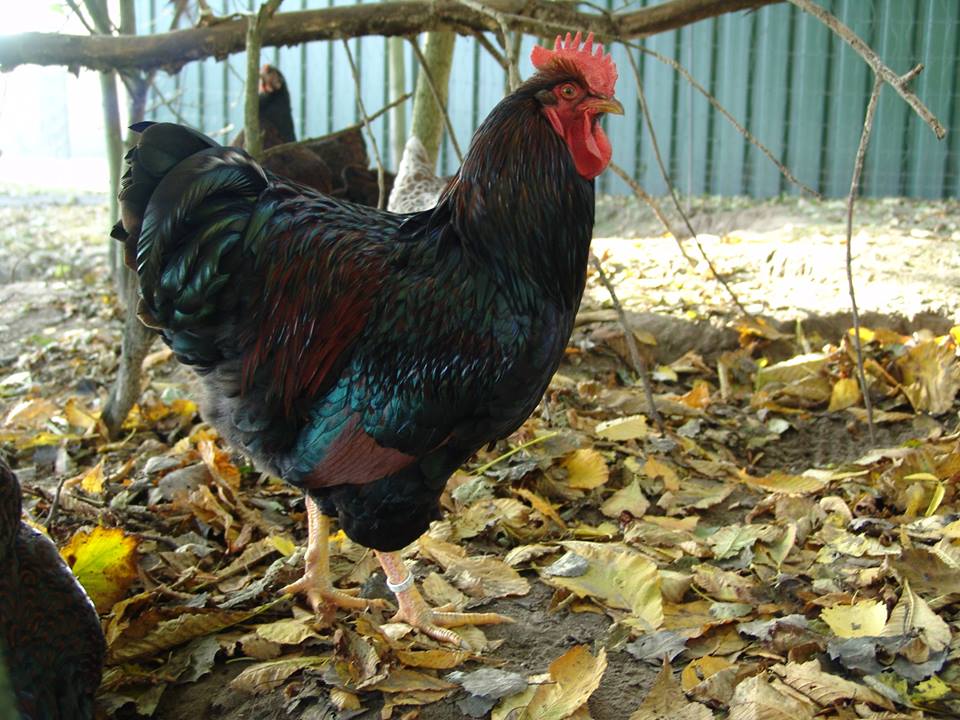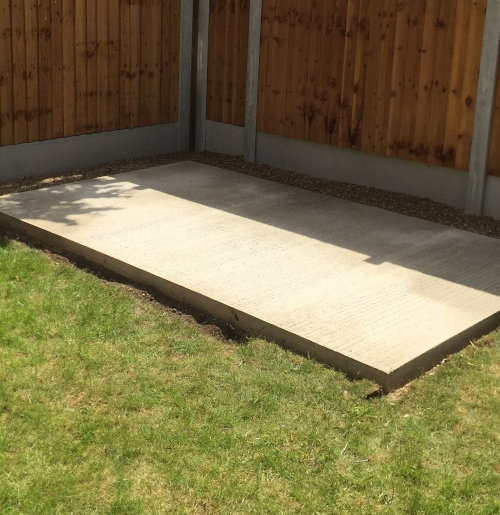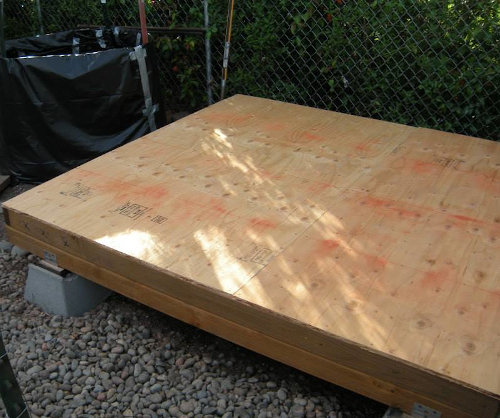Chicken coop floors and foundations.

Does a chicken coop need a foundation?
A chicken coop will need a solid base or foundation of some sort to keep the weather, predators and vermin out and provide a level standing for your hen house. A well made foundation will make your chicken keeping life easier.
If you live in a wet part of the world you coop will benefit from higher foundations to help with drainage and raising the hen house a few feet may well save you a whole heap of trouble when the heavy rains come and flood the ground.
Below: All stationary chicken coops benefit from a base of some sort. This is a solid concrete base.

Consider making your coop base or foundation a few feet larger than the chicken coop to give your flock somewhere sheltered and dry to stand out of the weather and mud.
What is the best base for a chicken coop?
The best base for your chicken coop is one that is easily constructed and maintained and does what you need it to. Solid bases like concrete are better for keeping vermin and predators out but are more time consuming and expensive as well as being immobile.
A wooden framed board base will be easier to build and can be moved around if you need to.
A base need to be solid and secure. I have seen more than one chicken coop that had been levelled up with a few bricks blown over in the wind.
Below: A raised board base built with lumber and sheet plywood.

If you have a solid foundation you don't need to raise the coop up to leave an airspace as rats and vermin will struggle with a solid base. If have an earthen base you should lift the coop up to form at least 12 inches of airspace to help you deal with pests.
Consider boarding up the windy side of the sir space under the coop to provide shelter for the chickens. Buildings should never be boarded all the way around, however, as rats will burrow beneath or gnaw through, giving a great deal of trouble.
Chicken coop floors and foundations:
It is a necessity to keep the house level, or at least as level as you can. This will make it more stable and help stop the wind blowing it over in bad weather.
Chicken coops commonly come on the following types of foundation.
- Concrete base.
- Stone or gravel base.
- Click together plastic base blocks.
- Earthen flooring.
- Legs and wheels to move the coop around.
- Legs with a framed wooden base and boards.
A foundation of cement or concrete is strong and more durable than any other if constructed properly and is the most likely to keep pests, predators and vermin out of the coop.
When building a cement foundation it is advisable to dig a trench from 15 to 20 inches in depth directly under where the walls of the house are to be and to fill that with compacted builders rubble or stone.
The material should be well mixed in proportions of 1 part cement, 3 parts sand, and 5 parts coarse gravel, to withstand the weight of the building
Dampness can be more easily overcome by using a board floor with air circulation underneath, rather than a cement or earth floor.
Below: An earth base should be avoided if you can. This one is likely to end up with a rat problem.

Does a coop need a floor?
A chicken coop requires a floor for the chickens to stand on and to hold a few inches of bedding. A good floor must be one which is dry, easy to clean and durable, with a good hard surface.
If made of earth, it must be well drained and if built of hardcore or cement, the surface underneath must be well drained to prevent the dampness from coming up through the cement and affecting the birds. It must, also be rat-proof.
A cold, dry chicken house can be more easily looked after than a wet, damp house, which is undesirable.
Below: These are a novel idea, interlocking plastic bricks you fill with gravel to provide a base.

A chicken house built with an earth floor should be well drained, and the soil of a nature which will not pat down and draw dampness by capillary action like clay would. Earthen floors are an invitation to rats, however, and should be securely protected by heavy, close-meshed galvanised wire, or by iron grating.
An earth floor can never give the same results when litter is used as bedding as will the board or solid floor. A wooden or board floor is more expensive but easier to construct and maintain.
The floor of the poultry house is as important to the health of the occupants as any other part of the building. A cold, draughty floor is a constant menace and a damp floor, with its constant evaporation of unwholesome moisture, is equally unfavourable.
Consider putting damp proof course under the concrete base if you live in a cold or wet county.
All floors must be cleaned frequently, fresh litter being placed in all scratching rooms, and sunlight be allowed to stream in upon them.
Where an earth floor is used, fresh earth or ashes must take the place of that cleared away each day.
